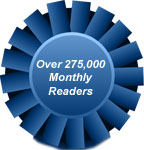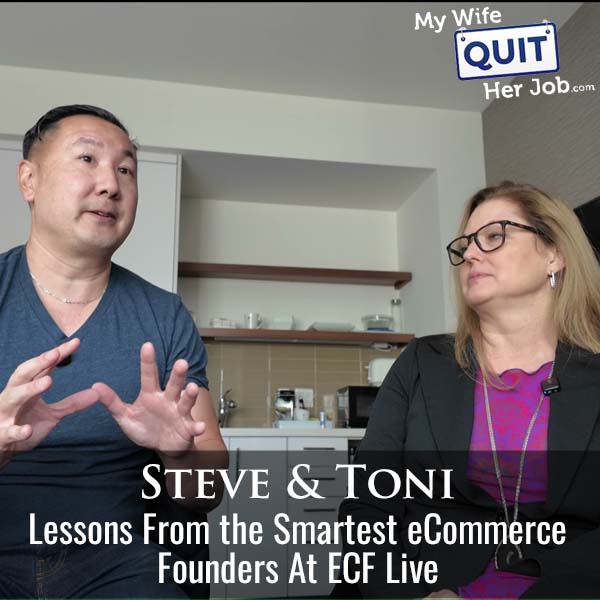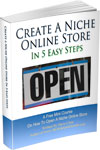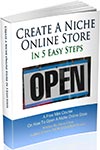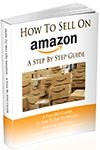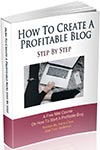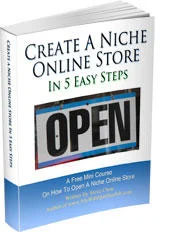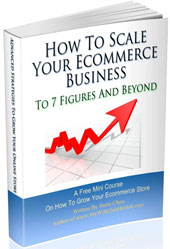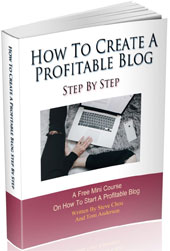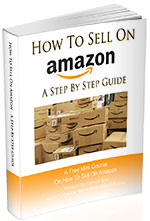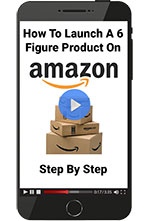Podcast: Download (Duration: 46:06 — 53.0MB)
In this episode, Toni and I share what we learned at Ecommerce Fuel Live in Bozeman Montana. You’ll learn the most actionable lessons, the surprising themes that kept coming up, and the mindset shifts shared by the smartest operators in the room.
Get My Free Mini Course On How To Start A Successful Ecommerce Store
If you are interested in starting an ecommerce business, I put together a comprehensive package of resources that will help you launch your own online store from complete scratch. Be sure to grab it before you leave!
What You’ll Learn
- Insider Tips From Top Ecommerce Minds
- How To Level Up Your Online Store
- What happened at ECF Live
Sponsors
SellersSummit.com – The Sellers Summit is the ecommerce conference that I’ve run for the past 8 years. It’s small and intimate and you’ll learn a ton! Click Here To Grab The Recordings.
The Family First Entrepreneur – Purchase my Wall Street Journal Bestselling book and receive $690 in free bonuses! Click here to redeem the bonuses
Transcript
00:00
Welcome back to the podcast, the show where I cover all the latest strategies and current events related to e-commerce and online business. Now in this episode, Tony and I share what we learned at E-commerce Fuel Live in Bozeman, Montana. Now, it is rare for Tony and I to be in the same room together and we both took great notes. But before we begin, I want to let you know that tickets for Seller Summit 2026 are now on sale over at sellersummit.com. And if you sell physical products online, this is the event that you should be at.
00:26
Unlike most ecommerce conferences that are filled with high-level fluff and inspirational stories, Seller Summit is all about tactical, step-by-step strategies you can actually use in your business right away. Every speaker I invite is deep in the trenches, people who are running their own ecommerce stores, managing inventory, dealing with suppliers, and scaling real businesses. No corporate execs and no consultants. Also, I personally hate big events, so I intentionally keep it small and intimate.
00:51
We cap attendance at around 200 people so you can actually have real conversations and connect with everyone in the room. We have sold out every single year for the past nine years and I expect this year to be no different. It’s happening April 21st to 23rd in Fort Lauderdale, And if you’re doing over 250K or $1 million in revenue, we also offer a private mastermind for high level sellers. Right now, tickets are the cheapest they’re ever gonna be. So if you want in, go over to SellersSummit.com and grab your ticket. Now onto the show.
01:27
to a special edition of the My Wife, Quit Her Job podcast. Tony and are together in Bozeman, Montana of all places. And we’re here for ECF. So what I thought we would do today is do a little bit of a breakdown on what we’ve learned. I’ve learned quite a bit. We both went to separate sessions. So we’re going to do a little recap here. I’m a little like my knowledge is like, I feel like I need like three day vacation after this to process everything that I’ve learned this week.
01:56
I know that I have a bunch of action items that I need to do when I get back. I think mine, I have two massive takeaways. Really? Like two? No, but like two that are like the ones that… Because I think one of the things when you go to an event, you are hit with so much information and you’re meeting people… Like I literally had a conversation in the parking lot on the way up here to record, right, with our friend Alan. And it’s like, how do you decide what is the priority, what you need to start now, what you need to like…
02:25
put on a shelf for later. So for me, there were two things that I felt like these are things that I need to start doing today. Okay. We’ll go into number one. Yeah. Well, yeah, you only have two. Well, like two for today, right? Two that it’s like next week, these two things need to be on my list to start working on. So the first one is the automations, AI automations. Like I went to Kevin’s talk, I think that was yesterday. Right. And then I went to another one this morning that was way over my
02:55
You would have liked it. Zach Plansky’s? Way more technical and basically talking about building your own apps for Shopify, like for internal use, right? Right. But I just realized there’s so many little processes in business every day that you do that could be automated. And I know you’re really good at this, but I think now with all the AI tools and yesterday, um I think they were using N8n for theirs. I have a little bit experience with make. so that’s probably the same thing. Right.
03:22
Yeah, so I’ll probably I think that’s one of those things they said yesterday like use what you already are using don’t like switch because we’re using something else but to me I started thinking about everything that I do that like is a like I uh Repetitive and I was like those things need to be automated like tomorrow, right? So and just watching and like Kevin did a live demo where he showed how to actually take something I think it was from a Google spreadsheet and you know kind of automated and it was actually an automation to slack
03:50
Which I thought was pretty cool, right? So like when certain things happen, then there’s a Slack notification that goes out. So that was my first one where it’s like I need to start evaluating tasks. And if it’s a task that is repetitive and done over and over, like it needs to be automated because someone shouldn’t be in there doing it every single, multiple times a day. So tell me then which tasks are on your radar first. So the first task that came to mind, which I think is if you’re in e-commerce, this is a big one, um is when we get an order over a certain dollar amount.
04:20
Like I feel like, especially because we sell low value products, they’re high value, but like low price products. Your average value, I think, is higher than ours, right? Yeah, actually probably. But like our product costs, like we’re selling items for $10 and $15. So if someone comes in and spends $800, they are probably a group or a church or a co-op.
04:39
So we want to have a personal relationship with them just like you do with wedding planners. And so they need a phone call or a personal outreach email. They need to get in the Klaviyo automation, but they don’t need just a series of emails from Klaviyo talking about our other products. um So you can create an automation where when an order is over x amount of dollars, whoever your customer service person is or the person who manages those relationships, they get a notification in Slack. What’s been happening to this day is
05:09
I look at our sales, when I see like an abnormal shift in the numbers, I look through the orders, I see the order that’s, you know, $1,000, I point at it on my computer screen, I take a photo and I upload that photo to Slack.
05:24
Not efficient. Yeah, I mean, we were doing it the same way. I mean, this is a recent automation that I made that scanned through all of my orders ever created. Yeah. And then it gives a probability, whether it’s a wedding or an event planner on a scale of zero to 100. And it’s all in this database. I wish I could have showed it to you. don’t have my laptop handy. But yeah, I went through my entire database. And what’s cool is we do personalization, right? So depending on the personalization, let’s say someone just ordered like three handkerchiefs.
05:52
that might not be enough to trigger an event planner. But if that person has made several orders, but with different names and different dates, chances are they’re a wedding planner. So Chachu BT actually takes all that into account. So that was my first, because that’s the one that I feel like is the most ridiculous of like times. Like that’s not a good process, right? Right. Yeah, yeah, Everyone looking at my bad nail job is not like… What are you talking about? Look at these suckers. look how good those look though. And then the other one that I thought was…
06:22
something that I’m pretty sure can be done, because a lot of people are already doing this, is basically doing some inventory forecasting. ah And that’s a little more common. The first one is like, I think I could set that up in a couple of hours. The next one, I also feel like I could set up, but it would definitely take more knowledge and I’d have to get a little more in the weeds. But I think a lot of people that I’ve talked to here and in the sessions are doing successful inventory forecasting with AI and automations. And it’s a matter of like,
06:51
you know, taking the time to build that, but that’s one of the things that we really struggle with. So it’s like, that’s a huge pain point that I think we could maybe not solve 100%, but we would definitely get further along than we are today. Yeah, I was just thinking about this because you brought this up to me earlier. I think a lot of those inventory forecasting SaaS software, I mean, it’s really easy to just pipe in all of your orders into AI and have it tell you. Yes. And then you could guide it along.
07:20
I know a lot of the inventory software is incorporating that in, but you’ll be able to do it. I’m not calling out anybody on this, but those are really expensive tools. They are. I mean, to the tune of thousands of dollars a month sometimes. And also, a lot of them provide so many features that you don’t actually use in your business. Most people, unless you’re a trained person on that tool, you’re probably using 10 % of what that tool can do.
07:47
So it’s like, then why don’t we just take the 10 % and just get the information we need for free or for $20 a month, right? Or whatever the cost of the AI tool, which is usually pretty inexpensive. So anyway, that to me is like one of the bigger, like that’s a bigger project, but also one that I feel like can be solved pretty easily. Like… It can, yeah. Once you have it set up, it’ll be all good. Then you can query it and whatnot. And for those of you guys listening, we were talking about N8n and Make.
08:15
Those are two programs that allow you to just connect all different softwares together, like Shopify to AI or ChachiBT, Claude, whatever. And uh the trade-off here is NAN is free if you install it your own server, is something I love. I love free. And then Make costs money, but Make is actually pretty inexpensive. I think what Kevin recommended is as soon as you exceed 10,000 operations a month, then it makes sense to go to NAN.
08:41
Otherwise, you can stick with make.com. But Zapier is just ridiculously expensive. Like I moved off of Zapier a long, long time ago. Yeah. Well, and you said the words install on your own server. So that was like immediately 50 % But it’s literally one click. Is it? Yeah. OK. There’s like an option to click on most servers. So yeah, that’s exciting. So are you going to take over that as part of your organization? I feel like I will. There’s nobody else that knows how to do it in the organization. it’s a useful skill. Yeah. For sure.
09:10
It’s one of those things where I feel like back in the old days of blogging when something came out and you were really excited about, that’s how I feel about this. I went to that other session today which was much more advanced. Going to it thinking I’m never going to build a SaaS product, but I want to be educated about how it works and the tools and things like that. I was just talking to Alan about Reclit. Reclit. Reclit, yeah.
09:39
Sorry, it’s written down. I have it on my phone. um But I really want to dig into some of those tools and just feel like, understand how they work and how we can use them and how I can use them in other things, right? Like I feel like they translate throughout businesses. It’s not just specific to e-commerce. Well, you know, NNN and make.com is a gateway drug to… I know. So before you know it, you’ll probably become a developer.
10:05
Well, was interesting. can’t make fun of you anymore. know. you can’t make fun of me. What was interesting is in the higher, you know, more complicated session, there were several developers. Oh, nice. And like our friend Carson was in there. Oh, yeah, of course. And of course, as the guy’s talking and presenting, I want to see what he’s… I want to see his response because I often feel like with AI in general, that people get very sensitive or protective of like their job as if like…
10:33
Well, if we can code everything with AI, then we don’t need Carson anymore, right? You still need Carson. Yes, you still need Carson. You still need Carson. So I always like to see those reactions like, he in agreement? And like he was nodding through most of the stuff that was said and the guy that was presenting even said, have two developers in Latin America that basically, but they don’t ever, they don’t code anymore. They’re just instructing, right? Yeah, Carson doesn’t get his hands dirty. I don’t No, not anymore.
11:03
Which leads me to the next takeaway that I had was like hire a developer in Latin America. um That seemed to be a lot of people that I spoke to after that talk were like, I need to look into this, right? Because he said he was paying, I want to say like 30,000 a year, 40,000 a year for a Latin American developer and was very, very happy with like the results, the quality, you know, all that stuff, which to me, I mean, I know a US developer is significantly more expensive. So here’s actually a shocker. uh
11:31
You know our friend Jeff Oxford. His whole team, had like I think over 100 people. It’s all gone now. moved to Kenya. what’s going on right now is the Philippines is just popular, right? Everyone here has employees in the Philippines. We have employees in the Philippines. So now it’s gotten to the point where a worker there, they don’t care if they lose their job because there’s so much demand, they’ll just get another one. Whereas people in Kenya are…
12:01
hungry, they speak English and they’re very, uh you know, they really want to do a good job. who knows, maybe that’s the next spot. Like I’m going to get in touch with, I think Katrina has connections over there and I’ll see if, you know, I look at Kenya for my next hire. Yeah, that’s, that’s, I didn’t know that. That’s really interesting. I mean, not a single person left on his Philippines team.
12:26
Wow. It was just crazy. It was interesting because we were all three talking and then as I was walking away, you said something, he’s like, I don’t have anybody in the Philippines. And I wanted to like turn back around but I was trying to get… But it was already past nine o’clock and you had to go back. It was 8.59 and I was like, I turned into a pumpkin. But no, I was really interested. I wanted to find him tonight and ask him about that because I was curious as to why. But that makes a lot of sense. Although I feel like on the Latin American thing, we also heard from, I think it was Lisa who has the 50 flowers.
12:55
Oh yeah, yeah. And she has her business in Ecuador and she’s telling how horrible it was to have a business in Ecuador because of all the labor laws. Yes. Right? So I’m always fascinated by… I always learn these types of things at ECF, right? The labor laws in some of these countries are ridiculous. I think what she was saying is once someone works for you for a certain amount of time, they’re on your payroll forever. You’re not allowed to fire them. Yes. Yes. So it’s like the government of old. The government of old.
13:24
Anyway, I always feel like there’s like these little tidbits of information that we get here. So I want to know one of your takeaways, other than Kenya. That sounds like a pretty good one actually. got a little thing here. Okay, all right. So this is something that I had been making a mistake on without even realizing it. So I went to a Facebook ad section run by Andrew. And Facebook ads like changes like every three to six months I feel dramatically. uh one thing that I was doing
13:51
just out of laziness and also because I heard from other people broadcasting this was I would take an ad and I would just change up the hook or the headline and just publish it. now uh it turns out Facebook looks to see if the ad is similar to something you’re already running and if you are, it instantly just nerfs the reach. It basically picks one and then just runs that. oh
14:20
I think the guideline that he gave was it has to be 70 % different. But what a lot of people were doing is as soon as you find a video that works and you know it works, you just change up the hook and then mass-reduce it. That is not an effective tactic anymore. those days are over. I mean those days are over. Here’s the other thing I was stressing. So I gave a lecture at Seller Summit, was that last year or two years ago? want to say it was two years Two years ago because Kelly Dream picked it all up.
14:48
Yeah, so ah the way I was teaching it, literally two months after I gave that presentation, it changed. ah Anyway, what Andrew was saying is the way I used to teach before is you test a bunch of creatives and then you can see which ones work and then you put more ad spend on this. Well, now his philosophy is the message is everything. Interesting. And the way he runs his ads, he doesn’t actually care which ones perform of the individual creatives because it’s all about the message.
15:18
each one of his ads where he puts like 10 or more ads in there because Facebook wants you to put more creatives and have less ad sets. um anything with the same message is within the same ad and then it doesn’t matter which one is working, you’re testing based on the message and not the actual creative anymore. Because he showed examples of like really horrible ads that like when you look at it, it looks horrible.
15:43
But then when he ran them, it did really well because of the message. So when you replicated that message across different creatives, they all still work. Interesting. That feels like a big change. The other change also, which I was surprised, is he’s kind of waffling now on… know, before his philosophy was just create as many creatives as possible. But he kind of backtracked on that now. He said, doesn’t need to be that way anymore. You don’t need to pump out as many creatives.
16:12
You just need to find the messaging that works and then just make variations on that. And with AI, it’s so simple. Like just changing the image on a different background with the same message is good enough. Which we learned today and Reto’s talk is very easy. We can talk about Reto’s talk next. ah I got a lot out of it because uh I had played around with those apps, but I didn’t.
16:34
Sometimes it’s hard, like you know you can do something, but you don’t realize the applications of something until you see someone just spell it out, like this is how I’m using it for one. And so one thing that I picked up is she was creating all these little apps that did all these things to your image, and these are all things that I was doing in Photoshop mainly after the fact. So just to be clear for everyone listening, she gave a really good talk on all the different AI tools.
17:01
and how she was focusing on Nano Banana, which is Google’s latest. And within AI Studio, you can create little programs. for example, you can uh write a program that says, I want to remove the background for this image, which is a function that all tools have already. it literally will modify, it create code for you on the fly. And you can modify it to do whatever you want.
17:27
You can say remove the background and then remove the watermark also, something like that. Or the other thing, I like the example where she’s like, crop it, but then expand it and then blur it. It was like all these different things. And then remove it, remove the one image off because of the layering. So the one thing I loved about that talk was that she basically gave us all the cheat codes for the terminology.
17:53
Because if you’re not a creative and you’re not a graphic designer, I think one of the reasons why people think it doesn’t work well with images is because they’re not giving it the right prompts. They’re not creating the correct, they’re not describing it right. And so she basically gave us the cheat code for a lot of different things. um I was, every year when people give the AI talk, wherever we’re at, I always am impressed with how much better it is. The stuff that she was showing us today.
18:21
was ridiculous. It used to be like you and I would be like, that’s AI, right? And it was very obvious. There are stuff that she showed today that I don’t think we would know. I mean, here’s the takeaway for everyone listening. If you can’t get AI to work, chances are it’s your fault. You’re not describing something very well. I think of like, so I run a class and sometimes someone will email me and say, hey, I tried this, it didn’t work. And that’s it, right?
18:51
And like if I was the AI, I would have no idea how to answer. And so I usually, you know, ask more specific questions. Well, the AI is not going to ask you those specific questions unless you ask it to. And so the more descriptive you are, and it actually boosts like human skill sets, the better you can explain exactly what you want, the better your results will be. And that’s why Ritu’s framework was excellent because she outlined, if you want to create an image, for example, what you should put in your prompt to get exactly what you want.
19:20
Yeah. I just wanted to take a moment to tell you about a free resource that I offer on my website that you may not be aware of. If you are interested in starting your own online store, I put together a comprehensive six day mini course on how to get started in ecommerce that you should all check out. It contains both video and text based tutorials that go over the entire process of finding products to sell all the way to getting your first sales online. Now this course is free.
19:47
and can be attained at mywifequitterjob.com slash free. Just sign up right there on the front page via email and I’ll send you the course right away. Once again, that’s mywifequitterjob.com slash free. Now back to the show. One of the exciting things about her talk for me, like practical application, and this is like actually my second takeaway, is that um when you sell products, right, you get your product photos. And those are pretty specific, especially if you sell on Amazon, they have to be a certain way.
20:15
And you obviously want to present things in a certain way in your listings, but you also want those lifestyle images to use sometimes on your listings, but also on social media, any other place that you’re using it. And the lifestyle images are really hard to come by, right? Because you can hire any photographer or even yourself can like take product photos with the right lights and white background and all that stuff. But like um if you sell, I don’t know, tactical gear and you’re not tactical, right?
20:43
It’s really like, if you don’t live here in Montana where you’ve got a mountain in the background that you could use, right? You’re like, how am gonna get this the right background type of thing? Or if you sell a kid’s product and you don’t have kids to put in the photo. um And so one of the things that we had talked about with the store for the curriculum was, should we make like Christmas type themed photos for the holidays? And basically we had to veto it because it’s like, we don’t have the bandwidth. It’s gonna cost so much money to do like Christmas photo shoots, right?
21:11
And after watching that today, I was like, we can put everything on a Christmas background, right? Not everything, but like the lifestyle photos just got so much easier, right? I don’t think we need to be investing a lot of money into having a photographer do this. I think if we have great photo, product photos, which we do, it wouldn’t be hard to create some lifestyle photos from what we already have.
21:34
including like Christmas or anything, right? It could be for your store, right? You could do 4th of July or you could do, you know, New Year, whatever it is. um I think creating those backgrounds where you’re not actually shooting them and they actually look real. They don’t look like you went into Canva and put in some clip art like what it used to look like. I don’t know. That to me was like, this is a huge money saver. But also it didn’t, I mean, obviously she’s got so much experience and she was like whipping through things, but I feel like once you do it a little bit,
22:02
you get pretty fast at it as well. forgot, I’m drawing a blank now on the site that she told us. Something with a llama. Do you remember what I’m talking about? I think I took a photo of it. Let me check. Okay, so there’s this site, Something Llama, but it’s basically a llama on a whole bunch of different backgrounds and whatnot. And what you can do is you can get the prompts for those llamas, replace the llama with your product and whatnot, and it puts it on all these different backgrounds. One of them, the examples that she gave was a Christmas theme, right? Yes, prompt llama. So prompt llama.
22:32
promptlama.com. So instead of the llama being there, you say, put a wedding handkerchief in a Christmas theme. It wouldn’t be a wedding handkerchief. It be one of our Christmas handkerchiefs in a Christmas theme. It could be. You could get married to Christmas. That’s fine. Yeah, exactly. And so that was really helpful in case you love one of those backgrounds already and you have to think about the prompt. Yeah. So that was to me really… And I liked the Google Studio, which the other part about that that I thought was really great was that you can share it across your Google.
23:01
So if you’re using Google for your workspace, it works exactly the same way. So if you have a Google Drive folder, like that’s what we use, we use Google Drive for everything, um then it works the exact same way. So one of the things I think gets tricky is, especially if you do have a lot of employees or contractors and you’re trying to introduce a new thing, if it’s too many new things at once for people, sometimes they can’t, so even the login becomes a problem, right? So this has just felt more seamless for people that are already using that.
23:30
So let just reiterate how cool this is. So you can essentially write your own version of Photoshop in Google AI Studio. So if you have a very specific way to process your images or whatnot, it literally writes the code and you have your own private little Adobe Photoshop that does whatever you want. And I was thinking to myself when I was watching her talk, Adobe Photoshop is, I think it’s pretty much done. Because I’m already using Nano Banana more than I am Photoshop. So like the other day,
23:59
I was sending out an email for some promotion and I was feeling lazy. So I took one of my old creators from an old email and I just plugged it in a nano band and said, can you just change the year of this to 2025? And then I sent it out. In Photoshop, because I didn’t have like the PSD file anymore, I just had the JPEG, I would have to erase it and then find, you know, it would have taken forever. Well, not forever, but… But I mean, think about it. If you’re doing that 10 times a week and you’re saving…
24:29
10 minutes. I mean, it adds up over time and in continuing to find other processes like that. ah And I also think, and this is where it gets tricky, right? Because I feel like maybe you don’t need the same amount of design team, right? Or maybe you don’t need, like we use illustrators. So you’re able to be more efficient and you’re using them now as more directors as opposed to like the creator part. Like they’re telling.
24:58
AI what to do, but they’re not spending two hours creating an image. um So I think there’s a lot of use in that. Well, what blew my mind also was uh I just got out of the Facebook talk when we went to the AI talk, and one thing that’s been a struggle for us is getting videos done, right? And so Reto had this flow where you generate the image of a person holding something, and then you replace that something with your product, and then you put it into Kling or Sora, and then you animate that.
25:28
So you can have like a supermodel modeling handkerchiefs or something like that in a video. he’s taking a whole new turn. Right. And I guess the next step for that might be to put words in that model’s mouth. I don’t know if I’m going to go there yet, but one thing that one of my buddies was advising that I do is take a lot of these mini movements of people holding your product and just put them in a montage because it really catches the eye because there’s slight motion and then pump out a bunch of ads that way.
25:59
Well, you showed me a model that was talking a while back. Yes. And it looked really good. Yeah. I can’t remember what I used that for. I think I used that for one of the Facebook ads creatives. The other thing that she mentioned is that I can’t now I’m to have to play on the Sora 2. Sora 2, it’s not out yet. Yes, it’s in. You have to have an invite. She’s like, she hadn’t gotten an invite yet. surprised she hasn’t gotten an I was too actually. who she is. I was like, if you’re not getting an invite, I’m never getting an invite.
26:26
I think that’s another thing to think about is every single, I mean almost every day, right? Stuff’s getting better, things are changing, they’re coming out with new levels of products and I don’t know, it’s almost like it just feels like too much sometimes, right? It just feels like everything’s just rushing by because everything’s changing so quickly. I mean the list of AI tools that she gave was ridiculous. I want to say there were 15 things on there. Just for creatives.
26:52
Just for creatives, I think for me, like the stack is Nano Banana, Kling, and then Sora. I just canceled my Mid Journey membership. Well, she mentioned Mid Journey today too. She did, but it’s like behind now. And they just take turns leapfrogging each other. So you basically have to just check back like every month or whatever. So, and speaking of that, were you in this conversation, I think you weren’t here this morning. We were talking about Claude versus Chat versus Gemini and who’s going to win.
27:21
There are no winners. They’re just going to keep leapfrogging each other. I’ll tell you my favorites, but go No, tell me what. Who do you think is going to win? So Lars had an opinion on who would win. I mean, there’s no winner because they’re all good at different things, right? And we’re all winners. No, we’re Gen Xers. Everyone’s not a winner. Here’s what I was shocked at. I was shocked by how many people use Gemini. Here? Yes. Because I don’t know anybody in my other life. Gemini has not been on my list, but…
27:50
Someone told me that Gemini, the coding is amazing. And I’ve been getting frustrated with ChatGPT. I don’t know if you noticed this too, but as soon as it got upgraded to five, it got a hell of a lot slower. So not only does it think slower, but it also writes text a lot slower. Yes, definitely seen that. To the point where I feel like I can type faster than what ChatGPT is outputting. So I’ve gotten really frustrated with that. But you’re still being nice to it, right?
28:16
I’m not nice to ChachiPT anymore. See, that’s why mine’s faster probably because I’m like, thank you so much ChachiPT. So Gemini is lightning fast because I think Google prides itself on speed. And then Claude is very fast. I use Claude for creative writing. I’m back on the Claude van Wagen for creative writing. It is so much better than ChachiPT now, again. Whereas ChachiPT in the last iteration caught up, I felt, but then Claude released another one. Anyway, this constantly happens. m
28:43
Gemini, I think Google’s making huge strides in just video and, not audio, video and image generation. Lars is betting on Gemini. He feels like Google has the most to lose by not winning, basically, is his philosophy, in a very, very small nutshell. He’s probably rolling his eyes me right now. I Google has all the data. It’s got the distribution. But then again, OpenAI has Microsoft, right? Which Microsoft has huge distribution. Everyone’s on Windows for the most part.
29:12
But I was amazed at the amount of people I’ve talked to in the last two days that use Gemini. Because I don’t normally…I mean, we don’t really use it. know, but I’m going to jump on the…I mean, I have used it. I’m going to jump back on the bandwagon for Gemini. I’m going to try it. I mean, like, why not? And I know Gemini is so much faster. You know, here’s the other reason why I didn’t use Gemini in the beginning. It’s because I was using AI to generate blog posts. And I was thinking to myself, huh, if I’m using Gemini to generate the blog post, won’t Google know that it was AI generated because I use Gemini?
29:42
And so that’s why I was using ChatGPT for a while. yeah, ChatGPT, guess, is just the general purpose. I don’t like the image generation because it just takes forever. Yeah, I never use it for image. I can’t stand it. The speed really matters. Well, and here’s the problem too. If you ask chat to create an image, it takes five minutes. Yes. And then if it’s not right, you’re like, I don’t want to iterate. It’s going to take me two hours to get, you know.
30:09
And obviously, I laugh at ourselves for being irritated that we’re mad at a computer for creating an image out of Milly. It’s like, you’re too slow. But yeah, we’ve gotten used to a certain standard. Well, I know Google Nano to Banner, you’ll get something in five seconds. When Ritu was doing live demos. Oh, yeah, yeah, yeah, in five seconds.
30:32
I don’t know if I have anything else to say about AI except I just gotta go home and start playing with this stuff. want like a month to just do nothing but AI. That’s like my dream right now. You’re not gonna be able to do that. No, I’m not. You have like fires every day. I know. That’s why it’s a dream. It’s not a reality. I have more time. That’s why he’ll always be better than me in AI. But I will tell you one little nugget I got from Ezra. So our friend Ezra Firestone spoke yesterday. um
30:59
The one thing, and I’ve heard him say this over the summer because I saw him at the Barcelona event, but he talked about building wealth. And the one thing that he said was, one of the best ways to build wealth is through building businesses and then selling them. And that just kind of stuck with me because I was like, you’re right. You have to grow something and sell it, and then you take that money and you invest. m
31:23
And I was like, you know, that’s really true. And he’s trying to build, I feel like, a very large He wants 100 million. Yeah. I have no- Yeah. I’m fine with 10. But I started thinking about that. was like, you know you’re right. And we know a lot of people who have built their wealth that way, right? Owning businesses, selling them, investing. And sometimes they go and do it over and over again, like our friend Dana, right? She’s done that multiple times. And sometimes you only need to do it once or twice.
31:52
But I was like, you know, that’s really true. you’re never… I somewhat disagree with that. Really? you like to the stock market. Well, no, no, no, no. The mentality of a lot of people here is you just got to go pedal the metal, uh you know, just build up that revenue and then go for the sale. Like the exit is the final destination, right? But like let’s say you’re making a decent amount of money every year, why not just milk it? Right? Yes, yes. I agree with that. And then just keep making money and don’t stress yourself out by like…
32:22
scaling like 10x every year or whatever it is, right? Yes. I wasn’t looking at it that way, but I can see. I was thinking like you build your business to whatever point. I mean, think Dana is a perfect example of this, right? Sure. Yeah. She said, like to sell at this point. She doesn’t want to build a $20 million business to sell. She wants to build a $3 million business or $5 million business But let’s say you get to $5 million and you’re netting a million dollars a year. Why not just chill and pocket that a million? I mean, it’s hard to spend a million dollars a year. Yeah.
32:52
I mean, couldn’t, I can’t, because I don’t even know what I would buy. No, I guess I’d, I guess if you buy real estate or cars, but that’s not, I don’t know. We’re not car people. Yeah, and you travel, there’s no way you can spend a million dollars traveling. Plus it’s not fun if you’re not doing it on points. It’s only fun if it’s a game. So that’s where I differ. I think the mentality here is like scale quickly, scale, scale, scale, scale, and then like the…
33:16
The goal is the sale and that’s the finality of I was kind of looking at it more in the Dana way of like slow and steady. Sure. Just repeated like build, sell, build, like not this. And we do know a lot of people who just grow, grow, grow. And that’s not that, I mean, to me those people always seem burnt out. So that always leads to depression. Actually, so one of the themes of ECF actually… Was depression. Was depression because, you know, the tariffs, a lot of people are having a hard time, it seems, uh you know.
33:43
And so what Andrew did is he had a lot of people tell stories of their lows. And there’s a lot of those stories and I felt like most of them that presented, they had their lows because they scaled too quickly. They get in over their heads. Right. A good friend, I think he spent like $5 million of his own money into his business because he took out this big loan.
34:11
where he was the personal, he had to pick, he was responsible for it, His personal guarantee. Yeah, that’s what I was looking for, personal guarantee. I would never in a million years do that. I know, I was thinking that. Right? Yeah, and we know other people who’ve leveraged their homes, and I’m like, no thank you.
34:32
I don’t know. Because Tal’s goal was to create a hundred million dollar company. Because he had had a bunch of good success with smaller businesses, like seven and a figure business, and he wanted the big one. And so I’m actually an investor in his company and he did a Were you at the revelation? Actually, what’s funny, and Tal, I don’t know if you listen to this podcast, but he gives out quarterly reports and then he goes up and he’s like, oh yeah, we were like two weeks away from going back home. like, what?
35:01
That was not in the quarterly report, Yeah, that was the… I don’t want to invite that kind of stress into my life. Oh yeah, definitely not. Definitely not. For sure. So that’s why I always say, you know, sure, the sale is good, but I mean, if the thing is milk and money, and there’s several people at ECF who I’ve talked to, they generate like five million revenue and they take home like a million or two million. That’s great. Yeah.
35:29
I mean, as long you can keep that up, why not just milk that money and pocket it? Well, it reminds me, uh many, many years ago, you and I had dinner with a native deodorant guy. I can’t think of his name. Moist. Yes. And he had given a talk about basically growing and selling. Right. And when he talked about those couple of years to the sale, he was miserable. Yes.
35:53
And like the whole time I’m like, who would ever want to do like to me it was like, this is a deterrent. any of them didn’t give me any sort of goal to try to do this. But it feels like everybody that we meet and talk to that has a similar path. It’s like, it’s like, is it worth being that miserable for however long and the risk and the stress on your body and your life and your relationships, right? And a lot of these people went through like divorce and you know, all these different things.
36:19
And it’s like, yes, at the end of the day, you had to exit, and that’s fantastic, but I don’t know if it’s worth it. There was a speaker who uh took out a whole bunch of loans to import masks during the pandemic. Yes. I can’t remember who it is at this point, but then all of sudden, there was plenty of masks. So he was stuck with all these containers. It was very stressful because he had all this inventory that he couldn’t liquidate. So again. uh
36:48
You know the big winners, they do take those big bets. It’s just not my personality. I don’t need to take those big bets. I don’t spend that much money. I’m very happy what I’m earning right now. We don’t need a yacht. We need a with a yacht. I don’t need a private jet. I just need a friend with a private We need to make better friends. That’s our problem. You know it’s funny because someone has asked me, hey, why don’t you buy properties in your favorite vacation spots or whatever.
37:15
I don’t want to take care of a property. I’d rather just go there and rent something for the period that I’m there. not worry about it for the rest And not worry about like the water main breaking or something like that. Well, the guy who closed us out, I’m completely… I can’t remember his name, but he was a good speaker. We can look it up. Hold on. um You talk while I look it up. What did he talk about? He’s a Portland Leather… Okay, hold on. I have some notes here. Okay. Yeah, so was a guy. runs Portland Leather. Curtis.
37:42
Curtis, I believe he is the largest seller of leather bags ah in the United States or something like that. He’s based in Mexico. And once again, he had a crazy story too. He was down to his last $100. I’m not sure how he got the last $100 to his company. Did uh he gloss over that part?
38:01
No, remember he got like sent out on the streets and they literally pulled him into a detox center. Yes. And then when he got out of the detox center is when he realized that he might need to make some changes when he was living out of his car. um But the one thing that he was talking about that I thought was really like a really good takeaway is that to move from like the five…if you want to move from five million to 10 million, right? You have to do something different. You can’t continue…
38:28
on the same path that you’ve been on. And I see so many people on the same path. he was like, someone who was a great marketer, this what I was really interesting, someone who’s a great marketer in 2017 is not a great marketer today if they’re still doing the same things from 2017. And I was like, you know, that’s so true. I see that with a lot of people. not to criticize anybody in your mastermind group or bloggers we know, but the people that didn’t pivot when things started changing.
38:59
Most of the bloggers that I knew in 2013 are not bloggers anymore, which is… Sometimes they just went on to bigger, better things and that’s great. To be fair, they were milking tons of money for decades. Yes, they had it good for a long time. But I do think that’s true. If you’re not willing to make changes and pivots and do try new things, and I think that seemed like one of things he was really good at is taking…
39:26
They didn’t seem like crazy risks, like doing things like he said he left. of them was pretty crazy, I thought. The warehouse? I thought the warehouse was kind of crazy. The warehouse was, go on. I’ll let you explain. The Etsy one. Did you think that was crazy? I thought the Etsy one was crazy. So he was making like a good amount on Etsy. And if any of you guys have ever sold on Etsy, you know that Etsy likes to like screw over their sellers basically on a monthly basis. And he was getting frustrated and he said he was a top Etsy seller. And so he decided to go to Shopify while still on Etsy.
39:56
He made one sale on Black Friday and he was like, we’re done with Etsy. Right. He jumped straight to Shopify. Which yeah, that was a little bit of a risk. Yes. But you know, I also feel like it definitely paid off for him. And we see this a lot with people too. Like you can’t always have your feet in two pools, right? Sometimes you have to make a decision and take that risk. And a lot of times people try to straddle for a long time. And sometimes that hurts you because you don’t.
40:22
commit one way or the other. reminds me of the Warriors, the two timelines, Draymond Green, Steph Curry, and then the young guys. But the other takeaway of his was also, like, if you want to double your business, you’ve got to think 10x, right? Yes. And so you’ve got to do those things that have outsized gains. Like, tweaking your website is not going to take you there. Running the same ads are just the same way as probably not going to take you there. So you’ve got to do something outsized.
40:51
I remember I went from six to seven when I introduced I think two things, uh meta ads and email marketing I think took me there. I think you need like three sources or something like that to take you to seven figures. But if I was just uh doubling down on SEO and Google, I don’t think I would have reached it just on that. I’ve also realized the reason that we’re not more successful is we never had like an alcoholic period. never hit rock bottom. That’s the problem.
41:20
That’s true, our lives are pretty cushy and I think a lot of the people who do really well, they’re willing to take those bets because they got very little to lose. Yes, yes. We have a lot to lose. We have a lot to lose. I think once you have a family, yeah, I’m not taking any those risks Well, it is interesting too that most of those stories come from single men. It’s true, they’re all single. Yeah. They’re all single guys. Yeah. Yeah. So I don’t know, you can take with that what you will. Yeah.
41:46
I didn’t go to this talk but I heard nothing but great things about it was going from founder to CEO. Aiden’s talk? Yes. Okay, I didn’t. Yeah. So one of my friends went to that one and she was texting me during the talk. And one of the things he said was, um if you brought your computer to this conference, you’re not a CEO. Basically, if you can’t go for two days without doing work and just being able to manage it on your phone, you’re not doing the right stuff. Like you’re not there yet.
42:15
And my friend was like, she’s like, I had my computer open and I just closed it. But anyway, like, I’m like, yeah, you know, and it’s, see, I see people struggle with this a lot. And I think it’s tough, right? Because, you know, the founder mentality is different than the CEO mentality and you have to shift a lot. I remember Bill D’Alessandro talked about this years ago, where when his business grew and there was someone who had been in the business from the very beginning and he had to let him go because he wasn’t…
42:44
the right fit anymore, right? The company had outgrown this, but this person hadn’t grown with the company basically. And how he considered him a friend, even though they weren’t, but he had been there since the beginning, and he had to make that decision, and it was really hard on him. And I think there’s lots of things like that. As a founder, it’s like you and your bros, right? You and your friends, and you’re all having a great time, and you’re all working in the garage, and it’s fantastic, and the next thing you know, you have a 20,000 square foot warehouse and 50 employees.
43:12
And you’re still in the mentality of like, we’re all friends, we hang out together on Friday nights and you don’t. And so apparently that talk was fantastic and I think anyone in that position should probably start educating themselves a little more in that area. I had a great lunchtime conversation with Jordan and uh he belongs to EO and he was telling me like every person in his EO group
43:34
should just run each other’s companies and make the hard decisions without emotions, right? Like Bill should have let that guy go probably a long time ago. A mutual friend of ours should let someone go, but there’s emotions tied to it, right? Because you interact with this person and it’s hard.
43:53
Maybe something to try, right? We just trade businesses for like a week and then do the hard firings and whatnot and then switch back. and also like if you founded the company, most likely you did everything by yourself in the beginning. So when there’s a problem, right, you’re like, let me just go in and fix that, right? It’s much harder to create the process to train somebody so that you don’t have to do that. But at end of the day, that will save you so much time later on.
44:17
But it’s like as a parent, right? You should teach your kid how to unload the dishwasher. Well, you probably don’t use your dishwasher, do you? No, we do. We’re not one of those Asians. You’re not one of those Asian families? But when my kids were little, they wanted to unload the dishwasher, and they would just throw all the silverware in the drawer, but not in the correct cubby. And you’re just like, let me just do it, as opposed to like, here, knives go with knives. But it’s the same just at a much greater scale. um And so anyway, I think.
44:43
Those talks are always interesting to me because I do feel like it’s a really hard shift for most people and why some people I think should actually hire a CEO, right? Right. They still own the company, but they’re not the one doing the day-to-day running. It is expensive to do that though, so you have to be a good… I mean that’s really hard to do, but yeah. Yes. But the people that I know that have done it, we’ve know a couple people, like they’re happy. Yeah. Well, yeah, because they’re not… They don’t do anything. They’re doing what they like to do and someone else is handling all the stuff they didn’t like to do in the first place.
45:14
But uh I think today’s the last day, right? Yes. We only have the closing party We have the closing party tonight. So it was a shorter ECF, but a lot of key takeaways. Hope you enjoyed this episode. Conferences compress years of learning and networking into a single weekend and it’s well worth the time. For more information and resources, go to mywifequithejob.com slash episode 612. Once again, tickets to the Seller Summit 2026 are now on sale over at sellersummit.com.
45:44
If you want to hang out in person in a small intimate setting, develop real relationships with like-minded entrepreneurs, and learn a ton, then come to my event. Go to SellersSummit.com. And if you’re interested in starting your own e-commerce store, head on over to my wife QuitHerJob.com and sign up for my free six-day mini course. Just type in your email, and I’ll send the course right away via email.
I Need Your Help
If you enjoyed listening to this podcast, then please support me with a review on Apple Podcasts. It's easy and takes 1 minute! Just click here to head to Apple Podcasts and leave an honest rating and review of the podcast. Every review helps!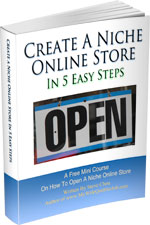
Ready To Get Serious About Starting An Online Business?
If you are really considering starting your own online business, then you have to check out my free mini course on How To Create A Niche Online Store In 5 Easy Steps.
In this 6 day mini course, I reveal the steps that my wife and I took to earn 100 thousand dollars in the span of just a year. Best of all, it's absolutely free!

